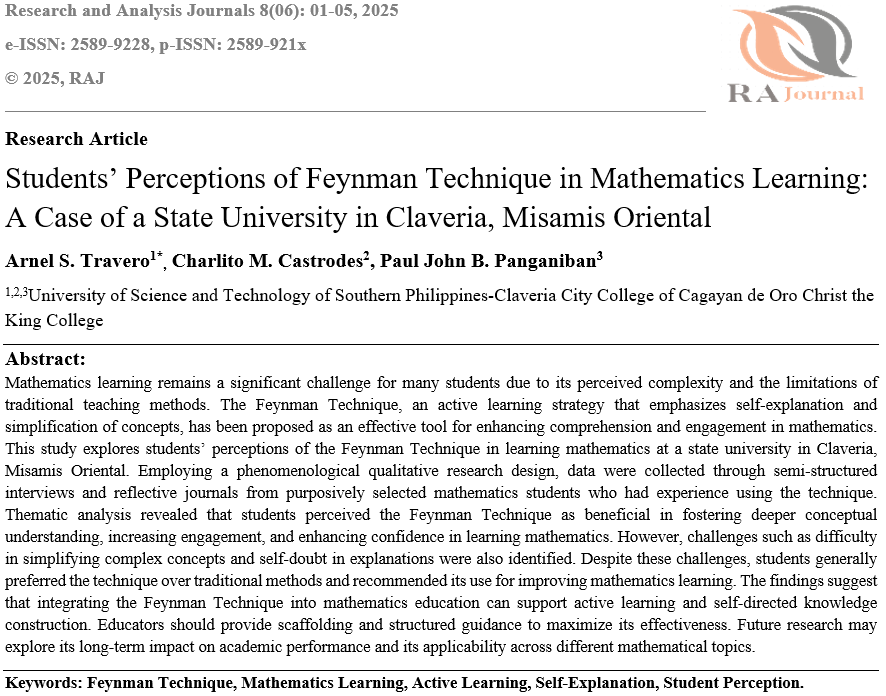
Downloads
Keywords:
Students’ Perceptions of Feynman Technique in Mathematics Learning: A Case of a State University in Claveria, Misamis Oriental
Authors
Abstract
Mathematics learning remains a significant challenge for many students due to its perceived complexity and the limitations of traditional teaching methods. The Feynman Technique, an active learning strategy that emphasizes self-explanation and simplification of concepts, has been proposed as an effective tool for enhancing comprehension and engagement in mathematics. This study explores students’ perceptions of the Feynman Technique in learning mathematics at a state university in Claveria, Misamis Oriental. Employing a phenomenological qualitative research design, data were collected through semi-structured interviews and reflective journals from purposively selected mathematics students who had experience using the technique. Thematic analysis revealed that students perceived the Feynman Technique as beneficial in fostering deeper conceptual understanding, increasing engagement, and enhancing confidence in learning mathematics. However, challenges such as difficulty in simplifying complex concepts and self-doubt in explanations were also identified. Despite these challenges, students generally preferred the technique over traditional methods and recommended its use for improving mathematics learning. The findings suggest that integrating the Feynman Technique into mathematics education can support active learning and self-directed knowledge construction. Educators should provide scaffolding and structured guidance to maximize its effectiveness. Future research may explore its long-term impact on academic performance and its applicability across different mathematical topics.



